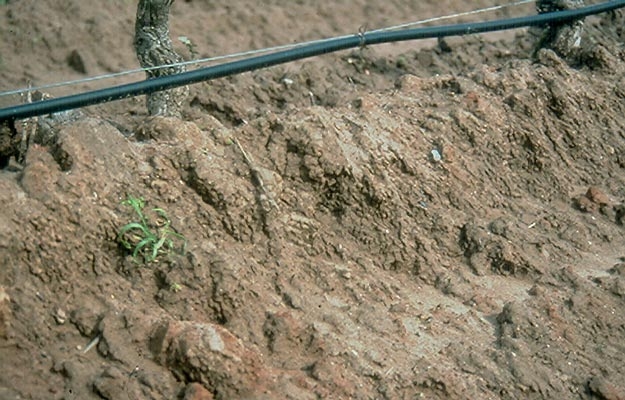What is soil organic matter and where does it come from? (continued from last month)
Organic matter in soil ranges from fresh unchanged organic materials through to highly decomposed organic materials.
So, the organic matter consists of soil biota (living organisms and roots), plant fragments, and polysaccharides, proteins, fats, lignin, waxes, resin, humus and charcoal.
Most organic matter is found in the surface soil, where most of the roots are, and so comes mainly from plants and soil biota.
Normal healthy roots continually release organic exudates into soil. Other plant residues, such as leaves and shoots, plus organic mulch or manures added by the orchardist, also contribute to organic matter in soil.
Relationship between soil organic matter and soil organic carbon
Sometimes a soil test shows organic matter as organic carbon; to calculate % organic matter, multiply the % organic carbon by 1.6.
Soil biota and decomposition of organic matter
Soil biota in the orchard include roots and beneficial and harmful organisms; and range from the smallest viruses (0.25 micron) to bacteria (0.3 micron), actinomycetes (0.5 to 2 micron wide) and fungi (less than 15 microns wide); to the largest animals, e.g. earthworms (> 10 mm wide). Altogether the soil biota can weigh up to 21 t/ha.
Soil biota use the organic residues for food and energy, and successively decompose complex organic molecules and release other organic compounds that other biota can use to build into new organic molecules, or store in their own bodies.
At the same time the biota release carbon dioxide, energy and water; inorganic materials such as nitrogen, phosphorus and sulphur; and micronutrients that plants and biota can use.
There is generally a high turnover of biota in soil which continues to add organic matter.
Fine roots and hyphae do not live long in soil but are fairly quickly replaced by new roots and microorganisms.
Amount of organic matter in soil
The amount of organic matter depends on:
- amount and quality of the organic residues returned to the soil
- soil texture, depth and density
- soil pH
- temperature, water content and aeration of soil
- microbial population.
Organic residues of high quality—those with a low ratio of carbon to nitrogen (C/N of <18)—are decomposed quickly as there is enough nitrogen to stimulate microbial activity. Organic residues with a high C/N (> 60) are decomposed very slowly.
Simple sugars, simple proteins and starch are easily decomposed, whereas hemicellulose, cellulose, fats, waxes and resins are slowly decomposed.
Lignin comes from cell walls of plants and some algae, and is decomposed very slowly. Charcoal is inert so is not further decomposed. Eventually the complex organic matter, humus, is produced and darkens the soil.
For each soil there is a limit to the amount of organic matter that it can store. Organic matter is more quickly decomposed in sandy soils, so they contain less organic matter than do clay soils.
The deeper the soil, the more organic matter it can hold.
Soils that are less dense are usually better aerated and drained, and are warmer with a longer growing season so that plants grow better, releasing more organic residues into soil and supporting more biological activity.
Continued next month
For more information, see Tree Fruit June 2014




















